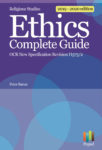Genetic Engineering
May 1, 2013
Genetic Engineering
In a twice weekly blog I give some advice on some A level issues very likely to be in the sumemr exam. As Genetic Engineering is highly likely to be in the AS level a word of warning – beware gross generalisations. GE includes practices as diverse as the genetic manipulation of human embryos (and even then it could be for sex selection or to select a disease free embryo): it could refer to genetic manipulation of crops to increase yields, or of cows or pigs to make them disease resistant; or the genetic manipulation of proteins to create an anti-cancer agent. All raise different moral questions. Here are some recent cases below.
1. Embryo genetic screening has been around since the 1990s. Prenatal .jpg) Genetic Diagnosis involves extracting one cell from an eight cell embryo fertilised in vitro (in a glass dish) and then screening it for a serious genetic abnormality such as the gene for muscular dystrophy. In 2008 the first screening for the breast cancer gene was performed. Professor Green of the HFEA comments: “eventually, without discarding embryos at all, we could use gene-targeting techniques to tweak fetal DNA sequences. No child would have to face a lifetime of dieting or experience the health and cosmetic problems associated with obesity. The same is true for cognitive problems such as dyslexia. Geneticists have already identified some of the mutations that contribute to this disorder. Why should a child struggle with reading difficulties when we could alter the genes responsible for the problem?"
Genetic Diagnosis involves extracting one cell from an eight cell embryo fertilised in vitro (in a glass dish) and then screening it for a serious genetic abnormality such as the gene for muscular dystrophy. In 2008 the first screening for the breast cancer gene was performed. Professor Green of the HFEA comments: “eventually, without discarding embryos at all, we could use gene-targeting techniques to tweak fetal DNA sequences. No child would have to face a lifetime of dieting or experience the health and cosmetic problems associated with obesity. The same is true for cognitive problems such as dyslexia. Geneticists have already identified some of the mutations that contribute to this disorder. Why should a child struggle with reading difficulties when we could alter the genes responsible for the problem?"
But what of the rich using genetic manipulation to give an advantage over their children? “Certainly, sometimes we want competitive advantage for our children, but for the enhancements I talk about, the competitive advantage is not the prime motive. I didn’t give my son a good diet in the hope that others eat a bad diet and die prematurely. I’m happy if everyone has a good diet. The moral imperative should be that enhancements are generally available because they are good for everyone”, comments one US blogger, Rebecca Sato.
Furthermore, the technical possibility of three-parent embryos raises additional ethical questions, discussed by New Scientist magazine here.
For an excellent article from nature on the ethics surrounding embryo manipulation, click here.
2. Food shortages. Sir Mark Walport, Government Chief Scientific Adviser, recently called for a review of the law on GM food – in order to stave of world starvation. “For every genetic modification you have to ask: what plant, what gene and for what purpose? The case will be strong for some and not strong for others. Each case has to be decided on its merits. If it were possible for instance to develop a blight-resistant potato then that would be a valuable thing to do”. (Independent April 2013) For more click below.
3. Animal suffering. A large proportion of animals every year is lost to disease. Can we afford to lose this much meat? “Given that some 17 per cent of farm animals in the developed world, and as many as 30 per cent in the developing world, are lost to animal diseases, any progress in that regard cannot easily be dismissed” (Independent 15.4.13)
4. Disease-resistant pigs. Pig 26 has been born recently – a disease resistant pig, by a new technique of “gene editing”. The "gene-editing" technique is at least 10 times more efficient than existing GM technology and crucially does not involve the use of antibiotic-resistance genes, which has been heavily criticised by opponents.
Researchers at the Roslin Institute in Edinburgh, where Dolly the cloned sheep was created in 1996, have created the first GM pig with the technique as part of an ambitious project to produce disease-resistant animals by genetic engineering.
The male piglet, designated "pig 26" and born last August, has been genetically engineered with the smallest of DNA mutations – a single deletion of one out of the 3 billion chemical "letters" of its entire genome. It is resistant to African Swine fever.
5. Fast-growing fish will shortly be licensed in the US. A fast growing GM modified salmon will soon be legally available in the US and the Chinese are working on a cow that produces milk high in omega-3, the miracle supplement. This provoked cries of “Frankinstein Food” from GM watch, the pressure group resisting new technology. But one columnist, Amol Rajan, wrote this:
“We should shout “hooray”. But not in the miserabilist, hysterical, ignorant and myopic worldview of the Mail. They prefer Dr Wallace's hatred of unintended consequences. But that hatred is mere superstition; and like all superstition, it must be confronted. What we have here is faith – belief without evidence – in the precautionary principle: better safe than sorry. This vile habit of mind transfers the duty of care from those who oppose change to those who propose change, and asks the latter to stop experimenting on the basis of what we do not know rather what we do.
The precautionary principle is inhumane, counter-productive, and extremely risky. Its superstitious opposition to human intervention in nature – for instance, with stem cell research – often increases suffering needlessly. It causes rogue rather than regulated scientists to take up the cause of human progress. And it hugely limits the likelihood that great discoveries will be made”. (Independent 18.6.12)
6. Anti-cancer proteins have been successfully engineered in Oxford this year. The terms ‘flesh-eating bacteria’ and ‘good news’ do not normally go together, but a group of researchers from the University of Oxford believe they have engineered a protein from flesh-eating bacteria that acts as a molecular ‘superglue’ and could be used to help detect cancer cells.
Mark Howarth and his team from Oxford University genetically engineered ANTI-CANCER glue from a protein, FbaB, that helps Streptococcus pyogenes bacteria infect cells. S. pyogenes is one of the microbes that can cause the rare necrotising fasciitis, a soft tissue infection, in which the bacteria can cause gangrene, tissue death, systemic disease and toxic shock. But in this case it eats cancer cells. (Independent April 2013)






0 Comments